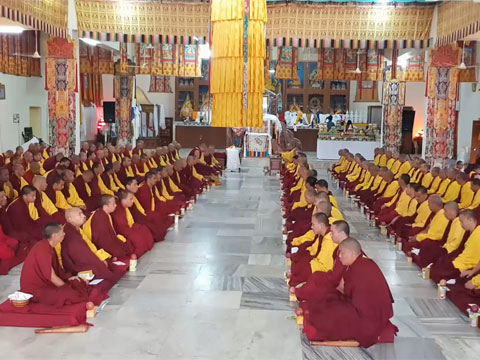Tuesday 10 November 2020
Conference "Tibetology and Buddhology at the Science and Religion Intersection"

The fourth international conference of the cycles "Tibetology and Buddhology at the Science and Religion Intersection" was held at the Institute of Oriental Studies (the Russian Academy of Sciences) on November 9th-10th, 2020. The conference was held on-line.
The event organizers proposed a number of issues for discussion: Tibet's ties with the neighboring countries; the state of Buddhism study in Kalmykia, Buryatia, Tuva, and other regions of Russia, Mongolia, and other countries; the activities of the 14th Dalai Lama on Buddhism preservation and on the development of religion links with science and secular ethics; the role of the Tibetan diaspora in the preservation of Buddhism and Tibetan culture; and, finally, Buddhism and science.
Researchers and specialists from different scientific and educational institutions were invited to participate in the conference. In particular, the conference attended experts from Buddhist spiritual centers of Russia, India, Mongolia, the Netherlands, Kazakhstan, the Center for Tibetan Culture and Information in Moscow, and others.
A.K. Alikberov, the Director of the Institute of Oriental Studies, and Telo Tulku Rinpoche, the Honorary Representative of His Holiness the Dalai Lama in Russia, Mongolia and the CIS countries, the Supreme Lama of Kalmykia, opened the conference by the welcoming speech.
The conference aroused great interest in the scientific and public circles. Among the speakers there were representatives from 14 cities and more than 20 scientific and university centers. The event attended more than 30 speakers, as well as participants and guests from Moscow and St. Petersburg, Elista and Kyzyl, Ulan Bator and Uralsk, Perm and the city of Lesnoy. Detailed discussions were held at the event, scientific and religious issues in interdisciplinary discourse were aroused. During the meeting the participants had an opportunity to compare different points of view and had chances to understand better the existing scientific approaches in order to develop them in future.
It should be noted especially that this time not only historians, philosophers, religious scholars, literary scholars, and linguists presented the results of their research. The physicists, physiologists, medics, and biologists delivered their works as well. The scientists from the Brain Institute and the Institute of Biomedical Research (the Russian Academy of Sciences) participated directly in the field research in Tibetan monasteries and Tibetan monastic centers.
More than forty representatives of various cities joined the hearings. They participated actively in the discussions and asked speakers plenty of questions.
The conference participants held discussions on the widest range of scientific, historical, and religious studies and demonstrated the growing interest of the scientific community in the issues of Tibetology and Buddhism, as well as the prospects for further dialogue between science and religion. The event once again showed and proved that science and Buddhism were not opposing, but mutually consistent spheres, and its further interaction would develop its future mutual understanding.
A collection of conference materials is being prepared for publication, based on the event results.